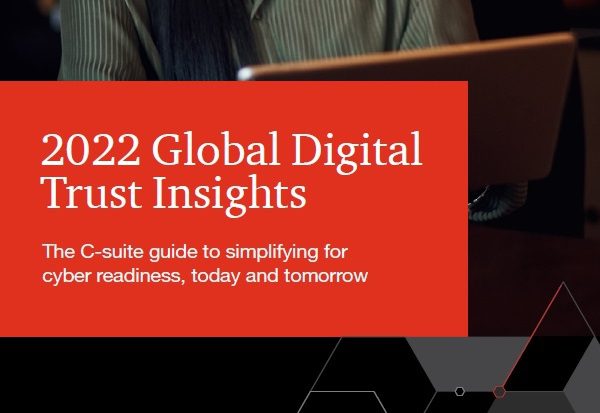REPORTS
2022 Global Digital Trust Insights
Organisations know that cyber risks are increasing. More than 60% expect a surge in reportable incidents next year above 2021 levels.
2021 is shaping up to be one of the worst on record for cybersecurity. During the 2020–21 financial year, the Australian Cyber Security Centre received over 67,500 cybercrime reports, an increase of nearly 13 per cent from the previous financial year.
Ever more sophisticated attackers are plumbing the dark corners of our systems and networks, seeking — and finding — vulnerabilities. Whatever the nature of an organisation’s digital Achilles’ heel — an unprotected server, a weakness in remote access or lack of cyber awareness — attackers will use every means at their disposal, traditional as well as ultrasophisticated, to exploit it.
The consequences of an attack increase as our systems’ interdependencies grow more complex. Critical infrastructure is especially vulnerable. The results of an attack go further than financial loss and include the potential for prolonged outages impacting essential services, health, safety and national security.
Yet, many of the breaches we’re seeing are still preventable with sound cyber practices and strong controls.
Simplifying cyber
As digital connections multiply, they form increasingly complex webs that grow more intricate with each new technology. Having a smart phone enables us to carry a variety of “devices” — telephone, camera, calendar, TV, health tracker, an entire library of books, and so much more — in our pocket, simplifying our lives in many ways and letting us work on the go.
The Internet of Things lets us perform a myriad of tasks by uttering a simple command, enables factories to all but run themselves, and lets our healthcare providers monitor our health from a distance.
But the processes needed to manage and maintain all these connections — including cybersecurity — are getting more complicated, too.
Is the business world now too complex to secure? Australian business leaders are sounding the alarm. Some 78% of Australian respondents to our 2022 Global Digital Trust Insights Survey say that unnecessary organizational complexity poses “concerning” cyber and privacy risks.
But because some complexities are necessary, your enterprise shouldn’t streamline and simplify its operations and processes thoughtlessly, but consciously and deliberately.
This 2022 Global Digital Trust Insights Survey offers the C-suite a guide to simplifying cyber with intent. It focuses on four questions that tend to get short shrift but, if properly considered, can yield significant dividends.
These questions may surprise and even challenge you because, in a survey about data trust, they aren’t technology-centered. Technology, in itself, is not the answer to simplified security.
This is why our focus is on working together as a unified whole, from the technology stack to the board room — starting at the top with the CEO. Security is a concern for the entire business, in every function and for every employee.
SHARE:

About the Provider






